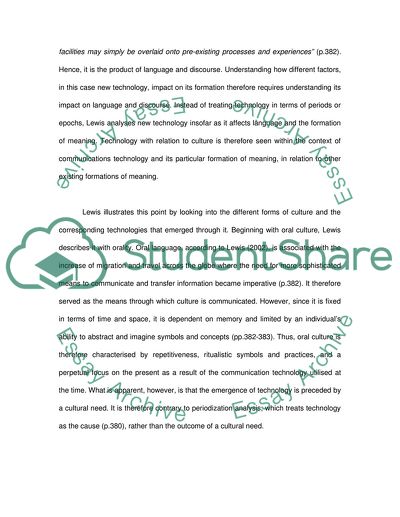Cite this document
(New Culture and Technology Essay Example | Topics and Well Written Essays - 2500 words, n.d.)
New Culture and Technology Essay Example | Topics and Well Written Essays - 2500 words. Retrieved from https://studentshare.org/culture/1703034-culture-and-society-critical-essay
New Culture and Technology Essay Example | Topics and Well Written Essays - 2500 words. Retrieved from https://studentshare.org/culture/1703034-culture-and-society-critical-essay
(New Culture and Technology Essay Example | Topics and Well Written Essays - 2500 Words)
New Culture and Technology Essay Example | Topics and Well Written Essays - 2500 Words. https://studentshare.org/culture/1703034-culture-and-society-critical-essay.
New Culture and Technology Essay Example | Topics and Well Written Essays - 2500 Words. https://studentshare.org/culture/1703034-culture-and-society-critical-essay.
“New Culture and Technology Essay Example | Topics and Well Written Essays - 2500 Words”, n.d. https://studentshare.org/culture/1703034-culture-and-society-critical-essay.


